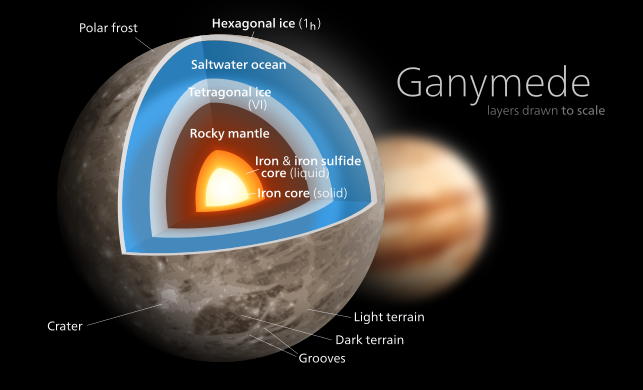Solar System values[edit]
The Sun has by far the lowest moment of inertia factor value among Solar System bodies; it has by far the highest central density (162 g/cm3,[3][note 3] compared to ~13 for Earth[4][5]) and a relatively low average density (1.41 g/cm3 versus 5.5 for Earth). Saturn has the lowest value among the gas giants in part because it has the lowest bulk density (0.687 g/cm3).[6] Ganymede has the lowest moment of inertia factor among solid bodies in the Solar System because of its fully differentiated interior,[7][8] a result in part of tidal heating due to the Laplace resonance,[9] as well as its substantial component of low density water ice. Callisto is similar in size and bulk composition to Ganymede, but is not part of the orbital resonance and is less differentiated.[7][8] The Moon is thought to have a small core, but its interior is otherwise relatively homogenous.[10][11]
end partial quote from:
https://en.wikipedia.org/wiki/Moment_of_inertia_factor
















